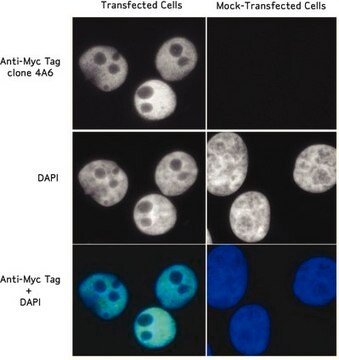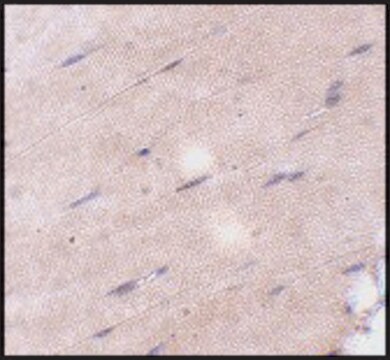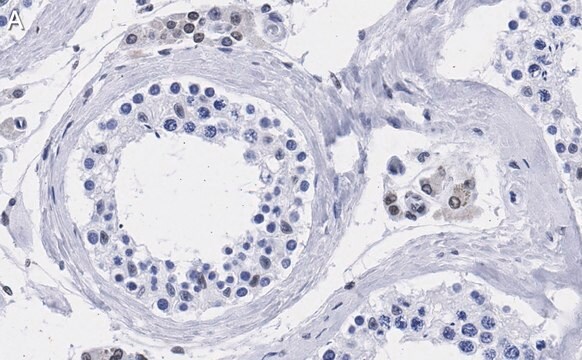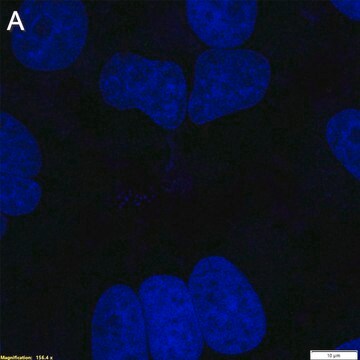Kluczowe dokumenty
SAB4200824
Anti-TFE3 antibody, Mouse monoclonal
clone TFE3-37, purified from hybridoma cell culture
Synonim(y):
Class E basic helix-loop-helix protein 33, Transcription factor E3, bHLHe33
About This Item
Polecane produkty
pochodzenie biologiczne
mouse
forma przeciwciała
purified from hybridoma cell culture
klon
TFE3-37, monoclonal
Formularz
buffered aqueous solution
masa cząsteczkowa
60 kDa
reaktywność gatunkowa
human, mouse, bovine, rat, canine
opakowanie
antibody small pack of 25 μL
stężenie
~1 mg/mL
metody
immunoblotting: 1.5-3 μg/mL using human A549 cells extract
izotyp
IgG1
numer dostępu UniProt
Warunki transportu
dry ice
temp. przechowywania
−20°C
docelowa modyfikacja potranslacyjna
unmodified
informacje o genach
human ... TFE3(7030)
Powiązane kategorie
Opis ogólny
TFE3 serve an important role in cell growth, cell proliferation, cellular adaptation to starvation and cellular response to ER stress. Under nutrient-rich conditions, TFE3 is located in the cytoplasm, and under starvation conditions or treatment with ER stressors, TFE3 rapidly translocates to the nuclear. In the nuclear localization, TFE3 mediates cellular adaptation to stress by simultaneously promoting lysosomal biogenesis, autophagy induction, as well as expression of critical mitochondrial and metabolic regulators. It been shown that TFE3 also participate in the transcriptional regulation of the innate immune response.
Pathogen infections promote TFE3 nuclear translocation, thus inducing In vivo expression of several cytokines and chemokines.
Zastosowanie
Postać fizyczna
Inne uwagi
Oświadczenie o zrzeczeniu się odpowiedzialności
Kod klasy składowania
10 - Combustible liquids
Klasa zagrożenia wodnego (WGK)
WGK 1
Temperatura zapłonu (°F)
Not applicable
Temperatura zapłonu (°C)
Not applicable
Wybierz jedną z najnowszych wersji:
Certyfikaty analizy (CoA)
Nie widzisz odpowiedniej wersji?
Jeśli potrzebujesz konkretnej wersji, możesz wyszukać konkretny certyfikat według numeru partii lub serii.
Masz już ten produkt?
Dokumenty związane z niedawno zakupionymi produktami zostały zamieszczone w Bibliotece dokumentów.
Nasz zespół naukowców ma doświadczenie we wszystkich obszarach badań, w tym w naukach przyrodniczych, materiałoznawstwie, syntezie chemicznej, chromatografii, analityce i wielu innych dziedzinach.
Skontaktuj się z zespołem ds. pomocy technicznej







